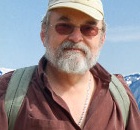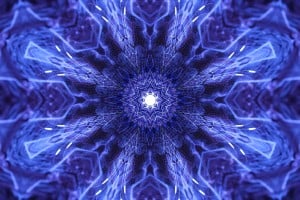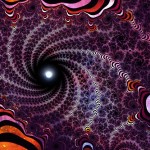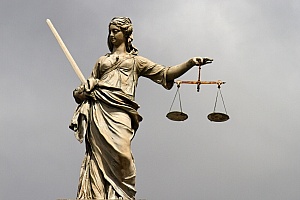This year marked a watershed in my life. I attended two weddings, but also a memorial service for one of my longest-time friends, and later, a funeral. My generation has become the oldest, the family elders. For me, from here on the funerals will outnumber the weddings and the deaths the births, until my time comes as well—that final initiation of our physical existence.
It is from this perspective that I approach one of my most beloved Sabbats, Samhain.
Here in California today, the time of Samhain is one of rapid cultural change. The Halloween of my youth has been transformed into a holiday where almost as much decorative stuff is sold as at Christmas. The traditional carved jack-o-lantern is overwhelmed by glowing ‘witches,’ bats, skeletons and creepy crawlies. A season whose symbols were once thought scary (except for the trick-or-treating) is becoming a time of parties and public display.
At one level, this transformation is another step in the complete commercialization of American life so sought for by the corporatocracy that dominates our country. With Halloween incorporated into the corporate borg, only Thanksgiving remains a relative hold out. But there is another, deeper level.
As a culture, we have always feared death. We make it something to never talk about and to put off for as long as possible, no matter how much personal and collective suffering is involved: squeezing out a few more months or years of biological life at the cost of intense physical pain. Yet now we are celebrating a time that has always been intimately linked with death. And at a personal level, many Americans are choosing to pass on when their time comes, rather than seeking to prolong the inevitable at great cost to themselves and others. Today, the meaning of death is being rethought.
In these developments, we EuroAmericans are gradually approaching a different sensibility, one long honored in the beautiful celebration of Día de los Muertos, or in English, Day of the Dead. Day of the Dead is an important holiday among our Mexican friends and neighbors. Cities and towns in California, and likely many elsewhere, are having their central squares or other public gathering places transformed with beautiful altars dedicated to departed ancestors while Mexican groups perform celebratory dances. Some of those dances are pre-Christian in origin, as is the holiday itself. Day of the Dead is a holiday, a holy-day, with roots in pre-contact Mexico.
Here in Sonoma County, where I live, when I attended a festival in Santa Rosa’s square last year there were about as many Anglos as Mexicans present. Trader Joe’s now sells large pots of blooming marigolds, the traditional flower for this celebration, one whose scent is said to attractthe spirits of those who have passed.
Samhain and Day of the Dead are celebrated only a few days apart, one on October 31, the other on November 2. As with Samhain, Day of the Dead does not welcome death as such. It is far from morbid. Like people everywhere, Mexicans mourn their departed loved ones, miss them, and are not in a hurry to join them. Yet Day of the Dead, again like Samhain, accepts death’s inevitability, its necessity, and the fact that while it makes an end to earthly life, it is not a permanent end. Death is a point along a cycle, one that never ends. In time we will join those who have passed on, and while the other side remains a mystery, the connections of love, not being physical, will likely lead to reunions.
Cultures change slowly and integrate other people’s practices into their own in unique ways, changing them in the process. This appears to be happening today in many parts of our country with respect to our fear of death. As in so many ways, a growing Pagan sensibility is spreading in areas that have resisted the retreat into religious and political reaction. Whether practices around death ultimately take on explicitly Pagan forms is less important to me than that they express Pagan values. And in many cases, this is happening.
Samhain and Day of the Dead celebrate the end of the cycle of physical life, but today I think they might be something even more. They are paradoxical signs of a badly needed new beginning that may be gestating deep within our society.
Death precedes new beginnings. The old and outworn must pass away so that the new can sprout and flourish. Every initiation is a little death, a little passing away, and also marks a new beginning. Death is the greatest initiation of which we know, and like all initiations, one best not attempted prematurely, but welcomed when its time has come. From the perspective of both Samhain and Day of the Dead, it is appropriate that we honor those who have passed over. We miss them, sometimes deeply, but we also celebrate them.
America today stands in great need of a new initiation into life, and the complementary times of Samhain and Day of the Dead hold promise that she may ultimately succeed.















